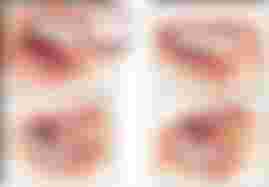Good oral hygiene involves more than just brushing your teeth. Teeth brushing is not effective in reaching the areas between the teeth and the gum - adopting a tooth-cleaning technique called flossing is recommended.
Flossing is an important oral hygiene routine and it involves the use of a floss to clean and dislodge food particles as well as remove dental plaque from between the teeth in areas a toothbrush is unable to reach. clean and dislodge food stuck between your teeth.
A floss is type of thread or cord that is used to clean the gap between your teeth.
Proper flossing helps remove bacteria, plaque, and food from between your teeth, and it reduces the likelihood of gum disease and tooth decay.
When to floss?
Although many people brush their teeth daily, not everyone flosses their teeth as regularly as they brush.
There is no ideal time to floss - whenever individuals find time to floss properly it can be done. The American Dental Association recommends flossing at least once per day. So, flossing once in 24 hours, especially at night, is a good option.
It is generally recommended to floss and then brush your teeth. Brushing after flossing is advantageous as flossing helps lift and release food and plaque stuck in between your teeth, while brushing removes these particles from your mouth.
How to floss?
Follow this guide to floss your teeth correctly.

Break off about 18 to 24 inches of floss and wind most of it around one of your middle fingers. Wind the remaining floss around the same finger of the opposite hand (This finger will take up the floss as it becomes dirty).
Next, hold the floss tightly between your thumbs and forefingers. Leave 1 to 2 inches length of floss between the fingers for your teeth.
Using the thumbs, gently guide the floss between your teeth .
As the floss reaches your gum line, curve it into a C shape against one tooth. Gently slide it into the space between your gum and tooth.
Hold the floss tightly against the tooth. Gently glide the floss up and down, rubbing it against both sides of each tooth. Don’t glide the floss into your gums. This can scratch or bruise your gums.
Repeat the step on the rest of your teeth. With each tooth, unroll a fresh section of floss from the finger of one hand while rolling the used floss onto the finger of the other hand using your thumb as a guide.
Good oral hygiene involves more than just brushing your teeth. It also involves flossing and knowing how to floss correctly. Poor flossing technique can result in complications, and it's important to be thorough yet gentle.

I agree, brushing alone does not prevent you from unwanted bad breath. Flossing and right way of brushing is a must. Also, others think that brushing only includes teeth when it supposedly also includes hums, side of your mouth, and your tongue. Brushing and flossing when done correctly can prevent you from dental issues.